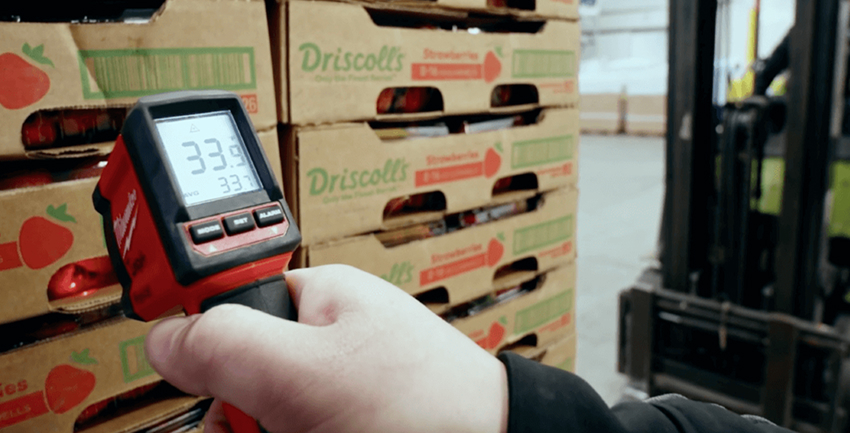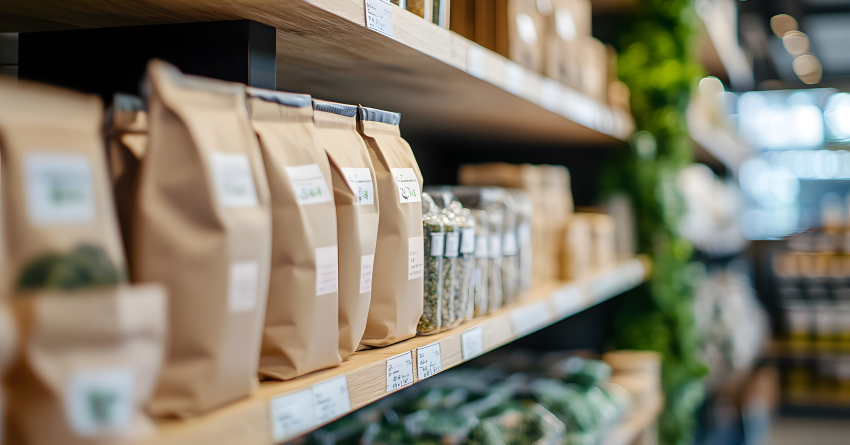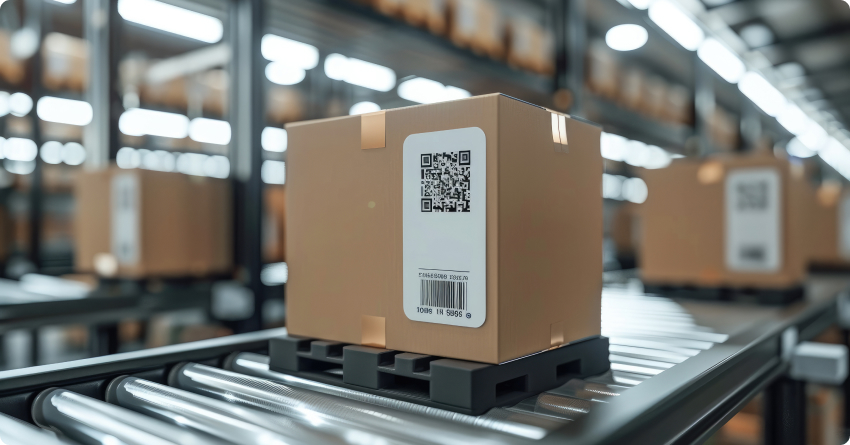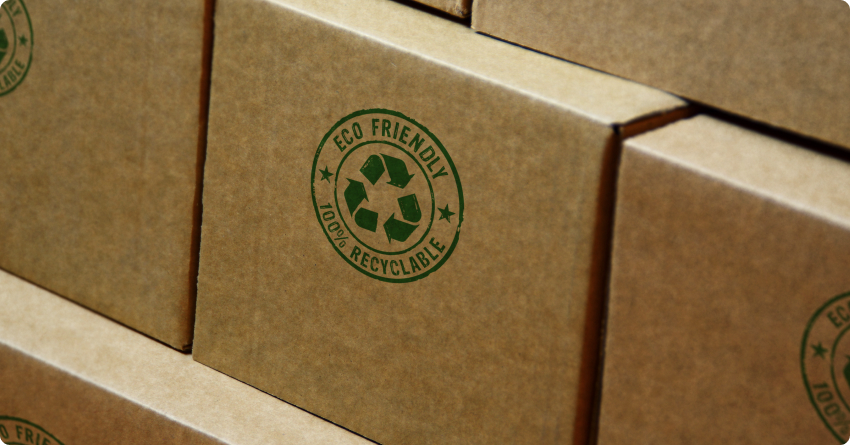Is Zero Waste Packaging Possible?
April 17, 2025
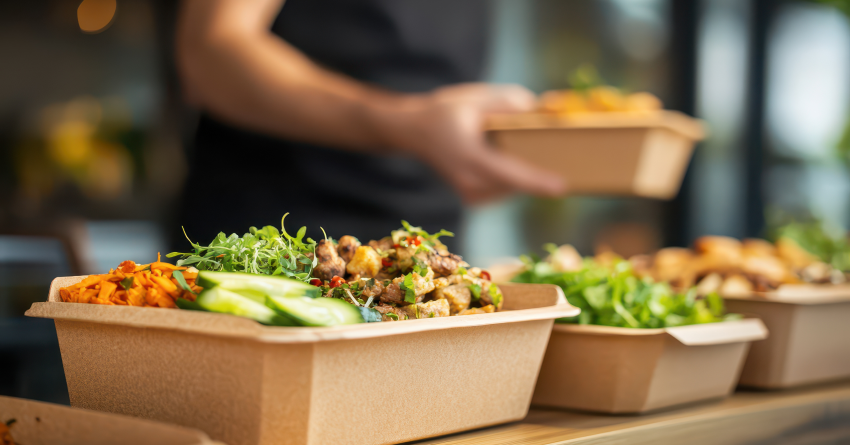
Growing concerns around the environmental impact of climate change have highlighted the need to reduce the amount of waste we produce daily. And in our e-commerce driven economy, packaging is in the spotlight. In the U.S., the EPA estimates a staggering 30.5 million tons of municipal solid waste generated by packaging materials and containers ends up in landfills each year. Consumers want to support businesses that minimize their impact on the natural world. For the packaging industry, the idea of “zero-waste” packaging has emerged as a possible solution.
Defining Zero Waste Packaging
Zero-waste packaging is a strategy aimed at eliminating waste through the use of reusable, recyclable, and sustainable packaging materials. This could mean replacing single use plastics with recyclable or plastic-free packaging alternatives, using compostable or biodegradable materials wherever possible, or simply minimizing material use overall.
As the name suggests, the most literal form of zero-waste packaging aims to produce no waste at all. In reality, this is the extreme end of a much broader spectrum of sustainable and eco-friendly packaging strategies and solutions you can adopt to help reduce your environmental impact while still containing, protecting, and branding your products.
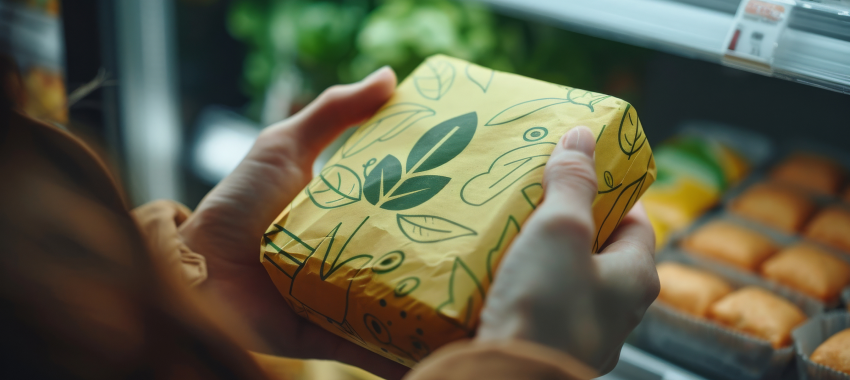
Examples of Zero Waste Packaging
In the packaging industry, single-use plastic is the single biggest contributor to waste. Most zero-waste packaging is designed for products that have traditionally been packaged in plastic. For example, Bite toothpaste bits come in a refillable glass jar as a plastic-free packaging alternative. A company called Zero Waste Cartel makes a whole range of shampoo and conditioner bars that eliminate plastic bottles, as well as a number of other household and beauty products that come in waste-free packaging. Zero-waste cosmetics packaging is also becoming popular.
Single-use plastics are virtually impossible to avoid in the grocery store, but some businesses are looking to change that, too, by promoting zero-waste food packaging. Zero waste stores encourage shoppers to bring their own refillable and reusable packages, selling unpackaged or loose bulk goods, refills, and products that are packaged sustainably. Some companies have gone even further, opting for edible options, like Evoware’s edible burger wrappers or these straws made from seaweed. These are just a few examples of the growing trend towards minimal-waste packaging, plastic-free packaging, and bioplastic packaging solutions.
The Benefits of Zero Waste Packaging
The environmental and economic benefits of reducing or eliminating the material waste produced by packaging are plentiful. You can:
- Reduce Climate Impact & Pollution
- Decrease Waste Management Costs
- Preserve Natural Resources
- Support Jobs and Economic Growth
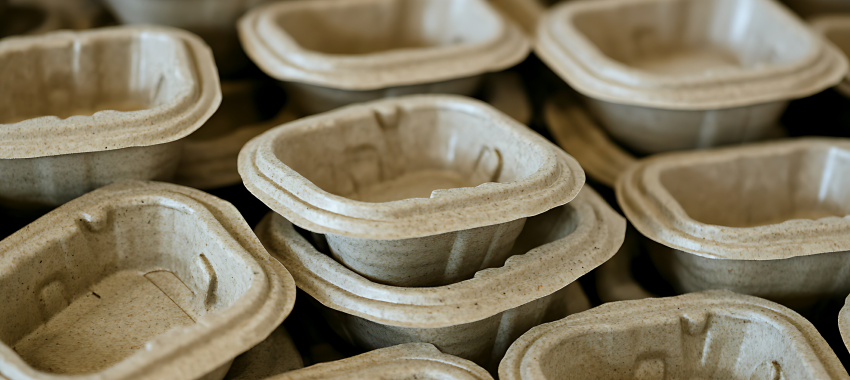
Reduce Climate Impact & Pollution
In packaging, plastic has become the go-to because it’s versatile and affordable. But the environmental impact is undeniable. We produce roughly 400 million tons of plastic each year. Up to half of that is single-use, meaning it’s headed for a landfill or, worse, the ocean. Plastics and other non-biodegradable materials can last for decades, releasing toxins into the environment and contributing to rapid climate change. Replacing single-use plastic with materials that are reusable, recyclable, or biodegradable, will help to reduce pollution globally, lessening the effects of climate change. This is especially important for packaging-heavy industries, and a key driver behind the growing popularity of zero-waste food packaging and zero-waste cosmetic packaging.
Decrease Waste Management Costs
While waste-free packaging may cost more up front, it’s important to look at the long-term impact. Traditional packaging materials incur waste management costs in the form of frequent waste pickup and landfill disposal fees. Sustainable materials, especially those that are compostable or biodegradable, can be disposed of much more easily through local composting sites, for example, reducing long-term waste management expenses. In some regions, opting for compostable solutions may even make you eligible for tax benefits or other government incentives, further lowering costs.
Preserve Natural Resources
By minimizing the total amount of material used, zero-waste packaging also helps to preserve natural resources including trees, fossil fuels, and metal ores. Using sustainable materials like recyclable cardboard, glass, or aluminum, can further protect the environment by extending the life of packaging materials and repurposing the resources that have already been used, rather than requiring more resources. This also lowers energy usage and costs, which in turn reduces the carbon footprint.
Support Jobs and Economic Growth
Shifting away from a traditional consumption model where businesses “take, make, use, and dispose,” towards a more circular economy model, where resources are reused again and again, also provides financial benefits. Using resources more efficiently reduces material costs for businesses, and can help promote growth by creating new, green jobs. Plus, adopting environmentally-conscious strategies can help boost your brand reputation and drive bottom-line growth, which also supports job creation.
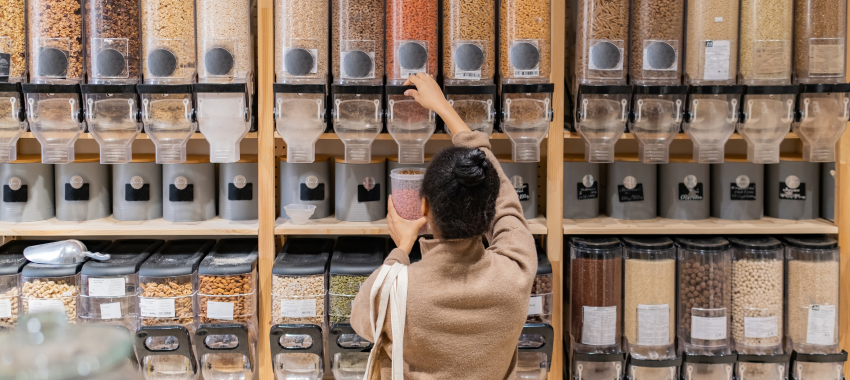
What Consumer Data Says About Zero Waste Packaging
Consumers today are more aware than ever of their own environmental impact and many are actively seeking to support sustainable businesses. According to a recent survey, 58% of consumers are willing to pay more for sustainable or environmentally friendly products and 53% are willing to pay more for a product with sustainable packaging.
A recent McKinsey survey suggests that, while two-thirds of consumers say sustainable packaging is at least somewhat important when making a purchase, most don’t have a firm grasp on which packaging types are most sustainable. Marking packaging solutions as sustainable or eco-friendly is a simple and smart way to close that gap while also helping to boost sales.
Our Approach to Zero Waste Packaging at Ernest
It’s important to remember that packaging serves many purposes. The best solutions strike a balance between effective design and minimal environmental impact. At Ernest, we love helping clients meet their sustainability goals with creative packaging solutions that are both environmentally-friendly and commercially effective.
For over a decade, the Ernest Innovation Lab has been leading the industry in creating green packaging solutions. In addition to protecting your product, we can make your packaging more climate friendly through strategies like:
- Recyclable materials
- Reusable corrugated stretch wrap
- Closed-loop reusable systems
- Lighter shipping options, which use fewer raw materials and less energy to transport
If completely waste-free packaging or plastic-free packaging isn’t a realistic option for your company, let’s talk about the many ways we can help you minimize waste and maximize the benefits to your business.
Packaging Design

